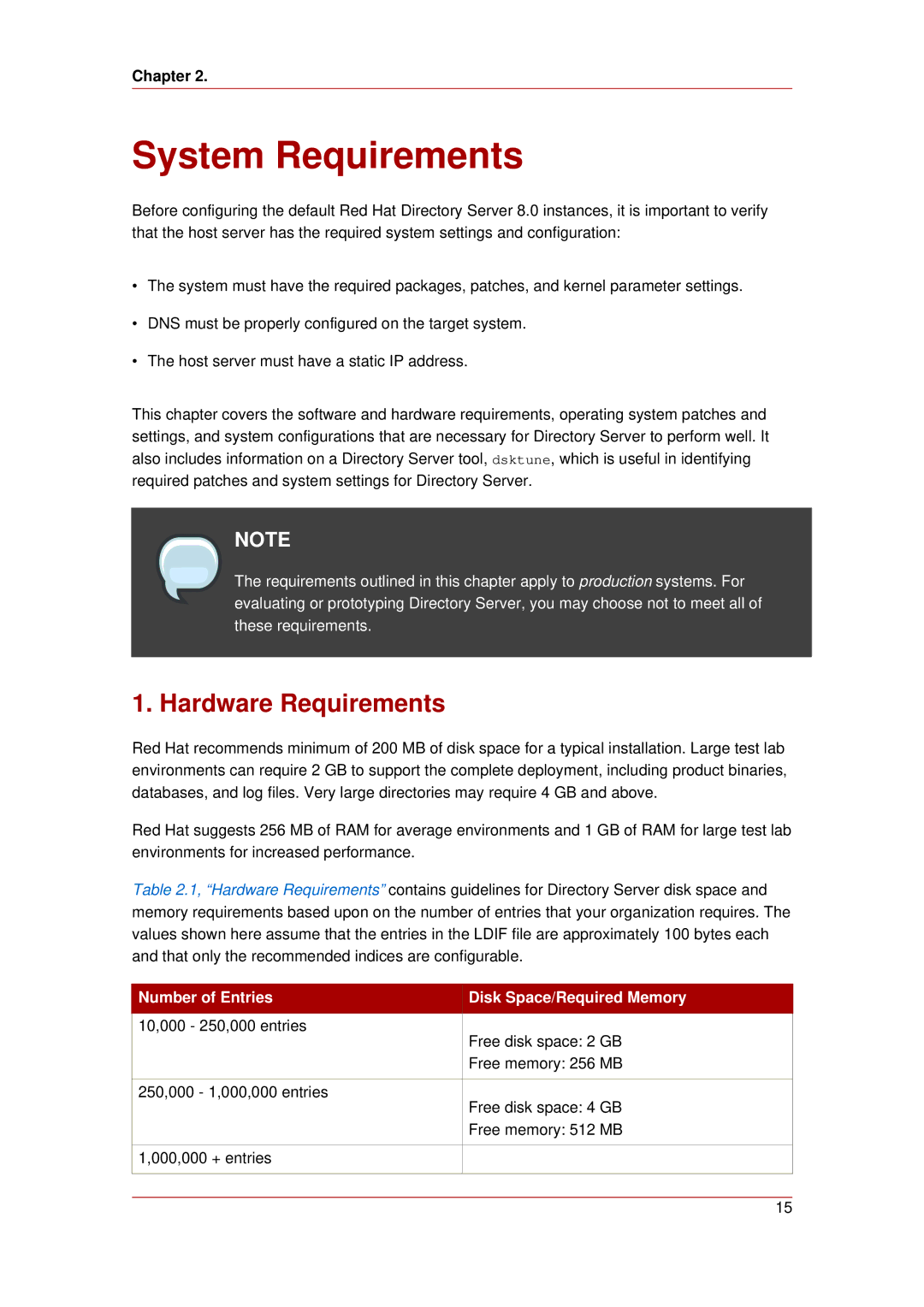
Chapter 2.
System Requirements
Before configuring the default Red Hat Directory Server 8.0 instances, it is important to verify that the host server has the required system settings and configuration:
•The system must have the required packages, patches, and kernel parameter settings.
•DNS must be properly configured on the target system.
•The host server must have a static IP address.
This chapter covers the software and hardware requirements, operating system patches and settings, and system configurations that are necessary for Directory Server to perform well. It also includes information on a Directory Server tool, dsktune, which is useful in identifying required patches and system settings for Directory Server.
NOTE
The requirements outlined in this chapter apply to production systems. For evaluating or prototyping Directory Server, you may choose not to meet all of these requirements.
1. Hardware Requirements
Red Hat recommends minimum of 200 MB of disk space for a typical installation. Large test lab environments can require 2 GB to support the complete deployment, including product binaries, databases, and log files. Very large directories may require 4 GB and above.
Red Hat suggests 256 MB of RAM for average environments and 1 GB of RAM for large test lab environments for increased performance.
Table 2.1, “Hardware Requirements” contains guidelines for Directory Server disk space and memory requirements based upon on the number of entries that your organization requires. The values shown here assume that the entries in the LDIF file are approximately 100 bytes each and that only the recommended indices are configurable.
Number of Entries |
| Disk Space/Required Memory |
|
|
|
10,000 - 250,000 entries |
| Free disk space: 2 GB |
|
| |
|
| Free memory: 256 MB |
|
|
|
250,000 - 1,000,000 entries |
| Free disk space: 4 GB |
|
| |
|
| Free memory: 512 MB |
|
|
|
1,000,000 + entries |
|
|
|
|
|
15
